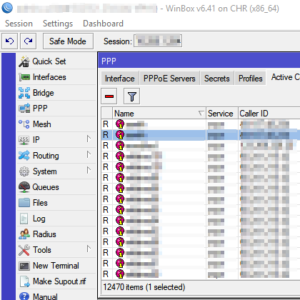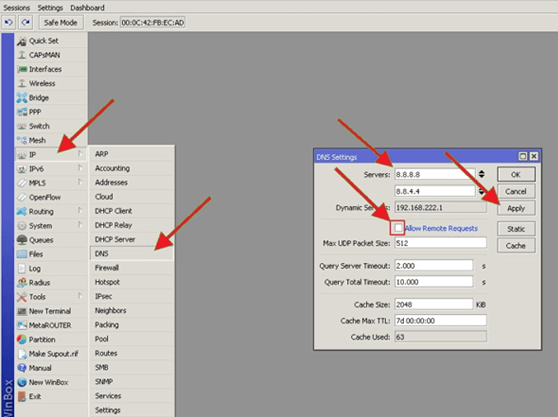

- #Mac vpn setup for mikrotik how to
- #Mac vpn setup for mikrotik software
- #Mac vpn setup for mikrotik mac
In your real network, this IP address should be replaced with public IP address. In this network, MikroTik Router ( RouterOS v6.38.1) is connected to internet through ether1 interface having IP address 192.168.30.2/30. To configure a MikroTik OpenVPN Tunnel for connecting a remote workstation/client, I am following a network diagram like below image.
#Mac vpn setup for mikrotik how to
So, in this article I will only show how to configure MikroTik OpenVPN Server for connecting a remote workstation/client (Windows Client). The goal of this article is to connect a remote client using OpenVPN Tunnel across public network. So, private networks of these routers can communicate with each other as if they were directly connected to the same router.


In this method, an OpenVPN client supported router always establishes an OpenVPN tunnel with MikroTik OpenVPN Server. Site to Site OpenVPN: This method is also known as VPN between routers.
#Mac vpn setup for mikrotik software
Connecting remote workstation/client: In this method, OpenVPN client software installed any operating system such as Windows can communicate with MikroTik OpenVPN server through OpenVPN tunnel whenever required and can access remote private network as if it was directly connected to the remote private network. MikroTik OpenVPN Server can be applied in two methods. So, OpenVPN Tunnel is a trusted tunnel to send and receive data across public network. MikroTik OpenVPN Server provides a secure and encrypted tunnel across public network for transporting IP traffic using PPP. So, a private network user can send and receive data to any remote private network through VPN tunnel as if his/her network device was directly connected to that private network. If set to yes, then server checks whether client's certificate belongs to the same certificate chain.VPN ( Virtual Private Network) technology provides a secure and encrypted tunnel across a public network. Require-client-certificate ( yes | no Default: no) #Mac vpn setup for mikrotik mac
2 * keepalive-timeout), not responding client is proclaimed disconnectedĪuto Generated MAC address of the server. If no traffic and no keepalive responses has came for that period of time (i.e. Keepalive-timeout ( integer | disabled Default: 60)ĭefines the time period (in seconds) after which the router is starting to send keepalive packets every second. Name of the certificate that OVPN server will use.Ĭipher ( aes128 | aes192 | aes256 | blowfish128 Default: aes128,blowfish128)ĭefault-profile ( name Default: default)ĭefines whether OVPN server is enabled or not. Otherwise it is safe to use dynamic configuration.Īuthentication methods that server will accept.Ĭertificate ( name | none Default: none)
Dynamic interfaces are added to this list automatically whenever a user is connected and its username does not match any existing static entry (or in case the entry is active already, as there can not be two separate tunnel interfaces referenced by the same name).ĭynamic interfaces appear when a user connects and disappear once the user disconnects, so it is impossible to reference the tunnel created for that use in router configuration (for example, in firewall), so if you need a persistent rule for that user, create a static entry for him/her. Static interfaces are added administratively if there is a need to reference the particular interface name (in firewall rules or elsewhere) created for the particular user. There are two types of interfaces in OVPN server's configuration Layer3 or layer2 tunnel mode (alternatively tun, tap)Īn interface is created for each tunnel established to the given server. Max packet size that OVPN interface will be able to send without packet fragmentation. Whether to add OVPN remote address as a default route.Ĭertificate ( string | none Default: none)Ĭipher ( aes128 | aes192 | aes256 | blowfish128 Default: blowfish128) Add-default-route ( yes | no Default: no)







 0 kommentar(er)
0 kommentar(er)
